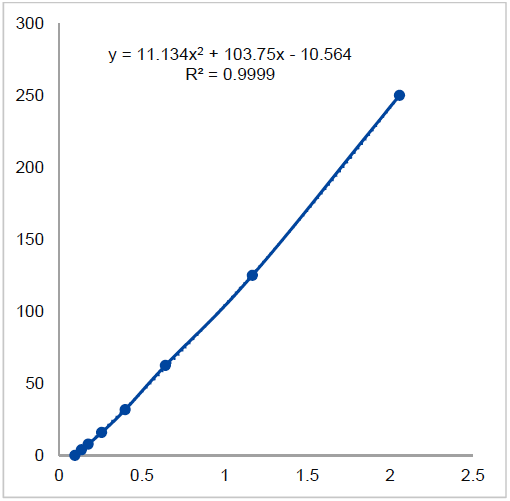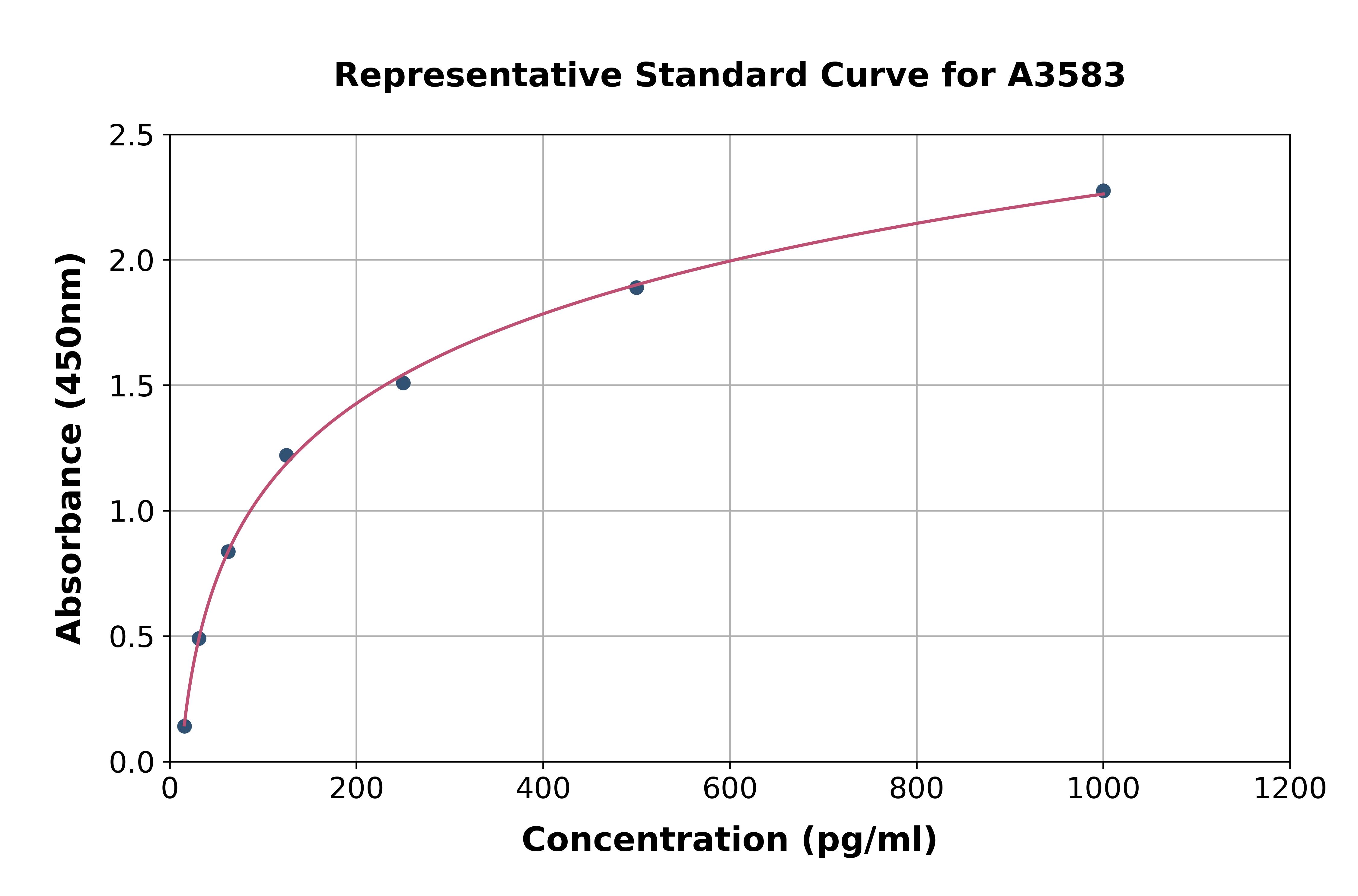
Standard Curve
IL-36gamma (human) ELISA Kit
AG-45B-0008
ReactivityHuman
Product group Assays
Overview
- SupplierAdipoGen Life Sciences
- Product NameIL-36gamma (human) ELISA Kit
- Delivery Days Customer10
- ApplicationsELISA
- Assay Detection Range3.9 to 250pg/ml
- Assay Sensitivity3pg/ml
- CertificationResearch Use Only
- Scientific DescriptionELISA Assay. Detects natural and recombinant human IL-36gamma. Colorimetric assay. Sample Type: Cell Culture Supernatant, Serum. Range: 3.9 to 250pg/ml. Sensitivity: 3pg/ml. IL-36alpha (IL-1F6), IL-36beta (IL-1F8) and IL-36gamma (IL-1F9) are members of the IL-1 cytokine family that bind to IL-36R (IL-1Rrp2) and IL-1RAcP, activating similar intracellular signals as IL-1 and are inhibited by IL-36Ra. The expression of IL-36 cytokines occurs mainly in the lung and skin and can be derived from diverse epithelial cell types including keratinocytes, bronchial epithelium as well as macrophages, monocytes and different T cell subsets. IL-36 family members induce the production of pro-inflammatory cytokines, including IL-12, IL-1beta, IL-6, TNF-alpha and IL-23, thus promoting neutrophil influx, dendritic cell (DC) activation, polarization of T helper type 1 (Th1) and IL-17-producing T cells (alphabeta T cells and gammadelta T cells) and keratinocyte proliferation. Induction of IL-36gamma in macrophages upon M. tuberculosis infection and its role in the release of antimicrobial peptides has been proposed. IL-36gamma is also induced in the lung in various models of asthma and can be produced by bronchial epithelial cells in response to viral infection, smoke or inflammatory cytokines and plays an important role in asthmatic pulmonary inflammation. IL-36gamma might be a potential biomarker of Inflammatory Bowel Disease and is highly expressed in inflamed skin from psoriasis patients and in Allergic Contact Dermatitis. IL-36gamma serum levels are enhanced and correlate to psoriasis severity and response to treatment with anti-TNF. - IL-36alpha (IL-1F6), IL-36beta (IL-1F8) and IL-36gamma (IL-1F9) are members of the IL-1 cytokine family that bind to IL-36R (IL-1Rrp2) and IL-1RAcP, activating similar intracellular signals as IL-1 and are inhibited by IL-36Ra. The expression of IL-36 cytokines occurs mainly in the lung and skin and can be derived from diverse epithelial cell types including keratinocytes, bronchial epithelium as well as macrophages, monocytes and different T cell subsets. IL-36 family members induce the production of pro-inflammatory cytokines, including IL-12, IL-1beta, IL-6, TNF-alpha and IL-23, thus promoting neutrophil influx, dendritic cell (DC) activation, polarization of T helper type 1 (Th1) and IL-17-producing T cells (alphabeta T cells and gammadelta T cells) and keratinocyte proliferation. Induction of IL-36gamma in macrophages upon M. tuberculosis infection and its role in the release of antimicrobial peptides has been proposed. IL-36gamma is also induced in the lung in various models of asthma and can be produced by bronchial epithelial cells in response to viral infection, smoke or inflammatory cytokines and plays an important role in asthmatic pulmonary inflammation. IL-36gamma might be a potential biomarker of Inflammatory Bowel Disease and is highly expressed in inflamed skin from psoriasis patients and in Allergic Contact Dermatitis. IL-36gamma serum levels are enhanced and correlate to psoriasis severity and response to treatment with anti-TNF.
- ReactivityHuman
- Storage Instruction2°C to 8°C
- UNSPSC41116158

